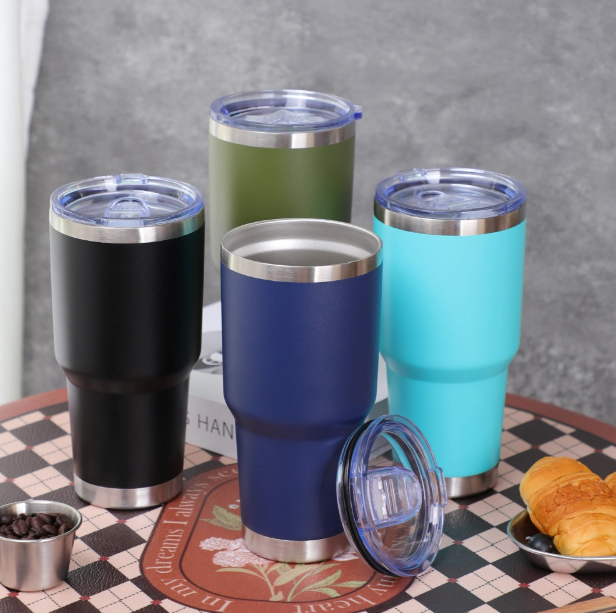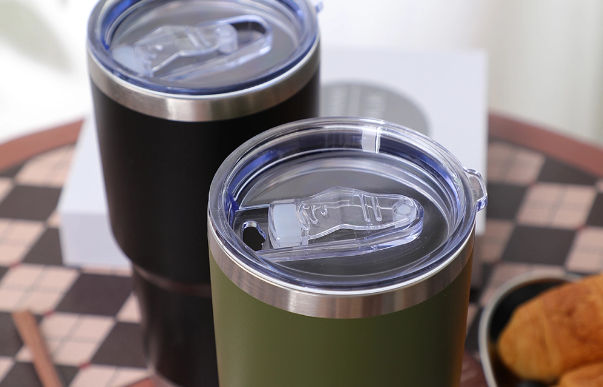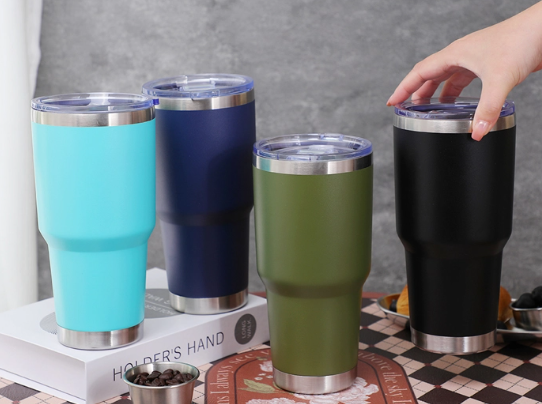
Water bottle capacity plays a key role in both personal hydration and business transactions. Whether you're choosing a bottle for yourself or stocking inventory for a retail business, understanding how to convert water bottle capacities is essential.
In this article, we’ll explore the various units used for measuring water bottles and show you how to convert them. You’ll learn how these conversions impact your purchasing decisions and ensure accurate product specifications.
Understanding Water Bottle Measurements
Ounces (oz) vs. Milliliters (ml)
In the U.S., water bottles are commonly measured in ounces (oz), with 1 fluid ounce equaling 29.57 milliliters. On the other hand, milliliters (ml) are used in many parts of the world, especially in Europe, as part of the metric system.
For example:
8 oz is approximately 237 ml (often used for children's bottles or small drink containers).
16 oz equals 473 ml, which is a popular size for everyday water bottles.
Understanding both measurements allows you to cater to both U.S. and international markets.
Other Units: Pints, Quarts, and Gallons
Beyond ounces and milliliters, larger units such as pints, quarts, and gallons are sometimes used to measure the capacity of water bottles. A U.S. gallon is equivalent to 128 oz or 3,785 ml.
Here's a quick breakdown:
Importance of Accurate Measurements in B2B
Accurate capacity measurements are vital in the B2B world, especially in retail and wholesale. Misleading bottle sizes can lead to customer dissatisfaction and costly returns. For example, if a product description says a bottle holds 500 ml, but it only holds 450 ml, it will impact customer trust.
In B2B transactions, knowing your bottle's exact volume ensures smooth operations, better inventory management, and customer satisfaction. Clear communication on size and capacity reduces mistakes in order fulfillment and enhances the sales process.
![water bottle water bottle]()
Common Water Bottle Sizes and Their Conversions
Typical Bottle Sizes in Ounces and Milliliters
Water bottles come in a variety of sizes, and it's essential to know how to convert these between ounces and milliliters. Here’s a quick reference guide for some common water bottle sizes:
| Bottle Size (oz) | Equivalent (ml) | Typical Use |
| 8 oz | 237 ml | Children's bottles, tasters |
| 12 oz | 355 ml | Standard beverage can size |
| 16.9 oz | 500 ml | Common plastic bottle |
| 20 oz | 591 ml | Popular for daily hydration |
| 24 oz | 710 ml | Fitness enthusiasts, long outings |
| 32 oz | 946 ml | All-day hydration, active lifestyles |
| 40 oz | 1183 ml | Travel, outdoor activities |
This table provides a snapshot of typical sizes for various lifestyles and needs, helping both businesses and consumers understand the volume they are working with.
Gallon Conversions
When considering how much water is in a gallon, here's how the common sizes break down:
1 gallon (U.S.) = 128 oz = 3,785 ml
32 oz bottles: 1 gallon = 4 bottles
24 oz bottles: 1 gallon = 5.3 bottles
16 oz bottles: 1 gallon = 8 bottles
Understanding these conversions can help businesses manage bulk purchases and marketing strategies more effectively, especially when targeting hydration challenges or larger customer bases.
Calculating Capacity Using a Measuring Cup and Kitchen Scale
To calculate the capacity of a water bottle accurately, you can use two simple methods: a measuring cup or a kitchen scale.
Measuring Cup: This method involves filling the bottle with water, pouring it into a calibrated measuring cup, and reading the measurement. It’s quick and simple but may be less accurate for irregularly shaped bottles.
Kitchen Scale: For more precise measurement, fill the bottle with water, then weigh it. Since 1 ml of water equals 1 gram, the weight in grams is the volume in milliliters. Convert grams to ounces by dividing the total by 29.57.
How to Calculate Water Capacity
Using a Measuring Cup
Fill the bottle: Add water to the bottle just below the cap’s threads.
Pour into the measuring cup: Pour the water into a calibrated measuring cup to see how much it holds.
Note the measurement: The result will give you the water bottle's approximate volume in milliliters or ounces.
This is a quick and simple way to check capacity, especially for smaller batches or occasional checks.
Using a Kitchen Scale for Greater Precision
Tare the bottle: Place an empty water bottle on the kitchen scale and set it to zero.
Fill the bottle: Add water up to the intended fill line.
Weigh the filled bottle: The scale will give you the weight in grams, which is equivalent to milliliters.
Convert to ounces: To convert to ounces, divide the weight in grams by 29.57.
This method is highly accurate and ideal for quality control, especially for B2B buyers who need precision in product specifications.
Converting Water Bottle Capacities for Hydration Goals
Understanding Daily Hydration Requirements
Daily hydration is key for maintaining good health, and understanding how much water you need can help you choose the right water bottle size.
Adults need approximately 64 oz (8 cups) of water daily.
Children need between 32 oz and 64 oz, depending on their age.
Using bottles that help track these hydration goals can simplify the process for individuals and encourage healthier hydration habits.
Matching Water Bottle Size with Activity Type
Choosing the right water bottle size depends on the user's lifestyle and activity level. For example:
Gym-goers often prefer 24 oz to 32 oz bottles.
Travelers or outdoor enthusiasts might choose 40 oz bottles for long periods without access to refills.
Kids generally use smaller bottles, around 14 oz, which are easier to handle and fit in their lunch boxes.
Benefits of Refillable Bottles for Sustainability
Using refillable water bottles contributes to sustainability by reducing single-use plastic waste. These bottles can be used repeatedly, helping decrease pollution and the demand for plastic production.
Tip: Businesses selling refillable water bottles can market them as eco-friendly options to attract environmentally-conscious consumers.
![water bottle water bottle]()
Conclusion
Understanding how to convert water bottle capacity is crucial for consumers and businesses alike. Knowing how to convert between ounces, milliliters, and gallons ensures the right bottle is chosen for every need, avoiding mistakes and ensuring satisfaction. Accurate measurements lead to better decisions and smoother transactions.
For businesses like Binsly, applying these conversion methods enhances marketing strategies, improves customer satisfaction, and supports eco-friendly products, providing value through well-crafted, durable water bottles.
FAQ
Q: How do I convert water bottle capacity from ounces to milliliters?
A: To convert ounces to milliliters, multiply the number of ounces by 29.57. For example, a 16 oz water bottle is about 473 ml.
Q: What are common water bottle sizes and their capacities?
A: Common sizes include 8 oz (237 ml), 12 oz (355 ml), 16 oz (473 ml), 20 oz (591 ml), and 32 oz (946 ml).
Q: Why is it important to understand water bottle capacity conversions?
A: Understanding conversions ensures you choose the right size water bottle for hydration needs, preventing mistakes in buying or selling.
Q: How can I calculate the capacity of my water bottle?
A: You can calculate the capacity using a kitchen scale or a calibrated measuring cup to measure the volume of water it holds.
Q: What’s the best water bottle size for daily hydration?
A: A 20 oz or 32 oz water bottle is ideal for daily hydration, depending on your activity level and hydration goals.




















